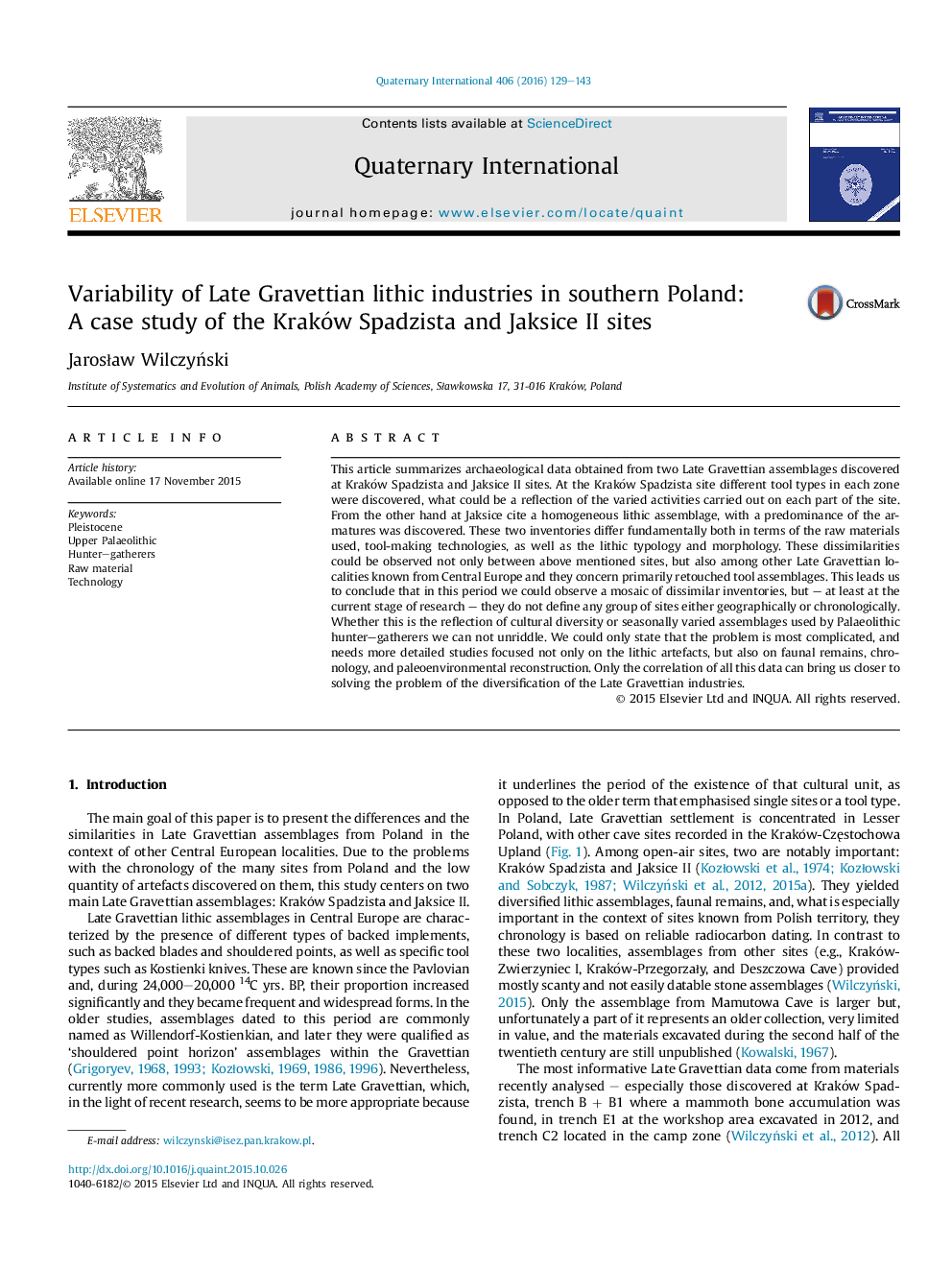| Article ID | Journal | Published Year | Pages | File Type |
|---|---|---|---|---|
| 1039972 | Quaternary International | 2016 | 15 Pages |
This article summarizes archaeological data obtained from two Late Gravettian assemblages discovered at Kraków Spadzista and Jaksice II sites. At the Kraków Spadzista site different tool types in each zone were discovered, what could be a reflection of the varied activities carried out on each part of the site. From the other hand at Jaksice cite a homogeneous lithic assemblage, with a predominance of the armatures was discovered. These two inventories differ fundamentally both in terms of the raw materials used, tool-making technologies, as well as the lithic typology and morphology. These dissimilarities could be observed not only between above mentioned sites, but also among other Late Gravettian localities known from Central Europe and they concern primarily retouched tool assemblages. This leads us to conclude that in this period we could observe a mosaic of dissimilar inventories, but – at least at the current stage of research – they do not define any group of sites either geographically or chronologically. Whether this is the reflection of cultural diversity or seasonally varied assemblages used by Palaeolithic hunter–gatherers we can not unriddle. We could only state that the problem is most complicated, and needs more detailed studies focused not only on the lithic artefacts, but also on faunal remains, chronology, and paleoenvironmental reconstruction. Only the correlation of all this data can bring us closer to solving the problem of the diversification of the Late Gravettian industries.
